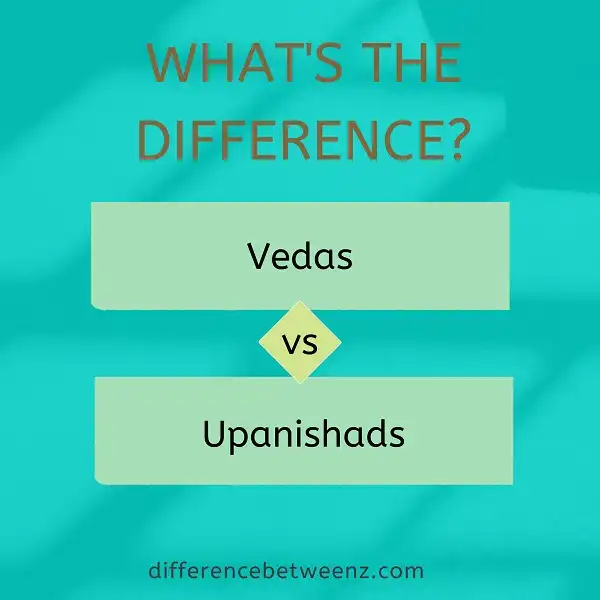The Vedas and the Upanishads are two of the most important sacred texts in Hinduism. Though they share some similarities, they also have many differences. The Vedas are a collection of hymns and rituals that were used by priests to officiate religious ceremonies. The Upanishads are a set of philosophical texts that explore the nature of reality and the soul. In this post, we will explore the main differences between these two sets of scriptures.
What are Vedas?
- The Vedas are ancient religious texts originating in India. These collections of hymns, prayers and rituals serve as the foundation for much of modern Hinduism as well as many other faiths.
- They are unique in that they span a long period of time and draw on many diverse sources, allowing them to be interpreted differently depending on interpretation or tradition.
- The four principal books in the Vedic corpus include the Rig-Veda, Yajur Veda, Sama Veda and Atharva-Veda, each offering insight into different aspects of divinity within this age-old faith system. In addition to their spiritual importance, the Vedas also offer an invaluable cultural resource for understanding ancient times in India through their descriptions of customs, traditions and language usage.
What are Upanishads?
Upanishads are ancient Indian texts that form the core of Hindu philosophy. Composed in Sanskrit between 800 and 400 BCE, they capture the ideas of creation, nature, and the search for ultimate truth. They contain spiritual wisdom expressed through dialogues, poetry, and stories told by rishis or sages. The Upanishads have influenced many Eastern philosophies and have become a key part of modern Vedanta, Yoga, and Kashmir Shaivism schools of thought. It is said that those who look to the Upanishads as a source of knowledge will gain insight into ultimate reality and the true nature of our existence.
Difference between Vedas and Upanishads
The Vedas and Upanishads are two of the most important bodies of religious and spiritual knowledge in Hinduism, but they differ in their origins, contents, and purpose. The Vedas are collections of ritual hymns that were composed orally by the ṛishis and passed down orally over many generations.
The Upanishads are later works, mostly composed around 1000-500 BC, consisting of discourses that were meant to provide instruction in metaphysical truth. While the content of Vedas mainly focuses on how to perform rituals and worship gods such as Indra and Agni, the Upanishads focus on exploring abstract philosophical concepts such as Brahman and Atman. Together both works have shaped Hinduism and its beliefs for centuries.
Conclusion
The Vedas and Upanishads are two of the most important texts in Hinduism. They both contain a great deal of wisdom, but they differ in their approach. The Vedas focus on ritual and sacrifice, while the Upanishads emphasize self-realization and spiritual liberation. If you’re interested in learning more about Hinduism, these texts are a good place to start.


